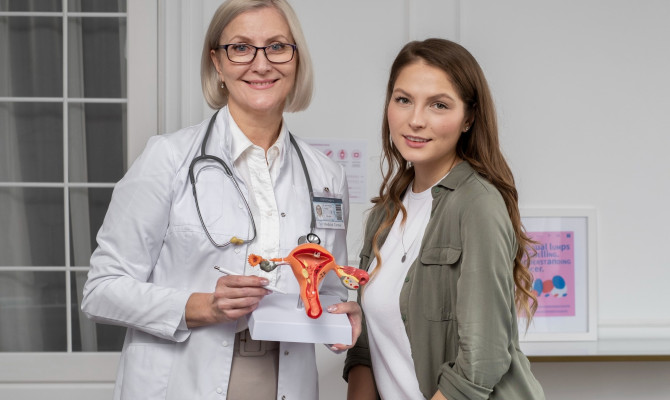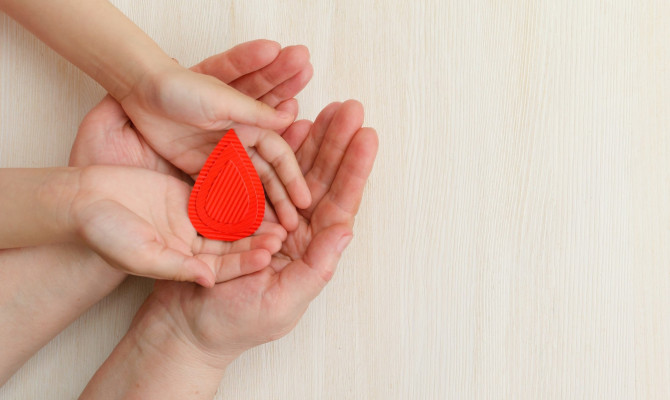Musculoskeletal Disorders: What Do You Need to Know?

- Musculoskeletal Disorders
- 22 Aug 2023
Overview
What is Musculoskeletal disorders?
Musculoskeletal disorders (MSK) are a large category of ailments that affect the body’s muscles, tendons, ligaments, bones, and other supporting tissues1Overview| Researched based study from Nlm.nih.gov Arthritis, back pain, and trauma are the three most common musculoskeletal disorders identified and cause yearly visits to doctors’ offices, ERs, and hospitals. Pain, discomfort, and restrictions on daily activities are just a few of these illnesses’ adverse effects on a person’s quality of life.
This article explores the many facets of MSDs, detailing their types, symptoms, causes, risk factors, diagnoses, treatment choices, preventative techniques, and potential side effects.

Types
Musculoskeletal disorders Types
There are several types of musculoskeletal disorders; some of the few examples of it are as follows:
- Osteoarthritis – is a degenerative joint disorder that impairs joint mobility and produces pain, stiffness, and stiffness2Types| Researched based study from Mayoclinic.org
- Rheumatoid arthritis – is an autoimmune condition where the synovium is attacked by the body’s immune system, causing irregularities, degeneration, and inflammation.
- Tendinitis – The tendons in the shoulders, elbows, wrists, knees, and ankles are most commonly affected by tendinitis, which is an inflammation of them3Types| Researched based study from Clevelandclinic.org
- Osteoporosis – Low bone mass and a higher risk of fracture are two characteristics of the condition osteoporosis.
- Bursitis – an inflammation of the tiny sacs packed with fluid that serve as bursae and act as a cushion for joints.
- Carpal Tunnel Syndrome – caused by median nerve compression at the wrist, resulting in tingling, discomfort, and hand weakness4Types| Researched based study from Clevelandclinic.org
- Fibromyalgia – a long-term condition marked by persistent soreness, exhaustion, and painful spots in the muscles and skeleton.
- Scoliosis – abnormal spine curvature that compromises mobility and posture5Theory| Researched based study from Mayoclinic.org
- Gout – a severe form of arthritis characterized by joint pain and inflammation brought on by the accumulation of uric acid crystals.
Symptoms

Musculoskeletal disorders Symptoms
Depending on the exact disorder, MSD symptoms might vary. However, they may include:
- Muscle aches and pain
- Cramps and muscle spasms
- Weakness and exhaustion
- Inflation and swelling
- Limited motion range
- Joint deformities 6Symptoms| Researched based study from Colostate.edu
- Sleeplessness
- Numbness
- Stiffness
Causes
Causes and risk factors
The factors that expose the person to exhaustion before the body’s recovery mechanism can catch up to them are thought to be the leading cause of musculoskeletal illnesses.
MSDs have several different and frequently complex causes and may include:
- Genetics – Some musculoskeletal illnesses can run in families, predisposing some people to certain conditions7Causes| Researched based study from Nlm.nih.gov
- Autoimmune conditions – when the immune system cells attack the body’s tissues.
- Repetitive motions – such as typing or moving heavy things- can strain the muscles and joints and cause illnesses8Causes| Researched based study from Hse.gov.uk
- Overexertion – Injuries can occur when muscles and joints are overworked by strenuous exercise or carrying heavy objects.
- Poor posture or ergonomics – Long-term poor posture or use of furniture or equipment that is not well-designed can strain the musculoskeletal system and increase the risk of ailments. 9Causes| Researched based study from Nlm.nih.gov
- Inactivity – Muscles and joints might become less flexible due to inactivity or sedentary behavior, making them more prone to problems.
- Trauma – Muscle, bone, and joint disorders can result from accidents, slips, or sports injuries that harm these structures.
- Obesity – A person’s chance of developing musculoskeletal issues can rise due to being overweight.
- Age-related changes – Natural wear and tear on the musculoskeletal system increase the likelihood of diseases like osteoarthritis.10Causes| Researched based study from Nlm.nih.gov
Diagnosis
Diagnosis of Musculoskeletal disorders
For the management of MSDs, an accurate diagnosis is necessary. Medical personnel may employ a variety of instruments and methods, including:
- Physical examination – During a physical exam, the doctor looks for things like discomfort, redness, edema, a limited range of motion, and painful spots and checks reflexes.
- Imaging studies – such as X-rays, MRIs, CT scans, or bone scans, are used to see the bones, joints, and soft tissues11Diagnosis| Researched based study from MSDManuals.com
- Blood tests – to look for signs of autoimmune diseases or inflammation.
- Other diagnostic tests – include arthroscopy, joint aspiration (arthrocentesis), never, and muscle tests (nerve conduction test).
Treatment
Musculoskeletal disorders Treatment
Treating MSDs aims to reduce discomfort, enhance functionality, and avert additional problems. Treatment methods may include – depending on the condition in question and how severe it is:
- Medications – like anti-inflammatory medications, painkillers, and disease-modifying antirheumatic medicines (DMARDs) for autoimmune diseases.
- Injections – like hyaluronic acid injections or corticosteroids, may be given to decrease inflammation and pain12Treatment| Researched based study from Clevelandclinic.org
- Physical therapy – Exercises and stretches designed to build muscle, increase flexibility, and improve joint function are used in physical therapy.
- Chiropractic adjustments – concentrate on reducing musculoskeletal system-related problems. Aches and pains, stiff muscles, or chronic illnesses may all be treated in this way. 13Treatment| Researched based study from Nlm.nih.gov
- Assistive devices – like splints and braces- support the affected areas and improve mobility.
- Surgical management – Surgery may be needed in extreme circumstances to replace or repair tissues or joints that have been destroyed.
Alternative treatments
- Acupuncture
- Massage 14Treatment| Researched based study from Nlm.nih.gov
- Aromatherapy
Prevention
Preventing Musculoskeletal Disorders entails developing a healthy lifestyle and taking preventative steps:
- To support bone health, consume a balanced calcium and vitamin D diet.
- Exercise frequently to build up your bones and muscles.
- Use ergonomics and good body mechanics when performing daily tasks and at work.
- When performing repeated jobs, take frequent pauses to avoid overuse injuries15Prevention| Researched based study from Ucla.edu
- Quit smoking and consuming excessive alcohol as they can affect the bones.
- Regularly stretch your body.
Complications
Complications of Musculoskeletal disorders
Untreated or improperly managed MSDs can result in the following problems:
- Loss of function and persistent pain 14Complications| Researched based study from Nlm.nih.gov
- Decreased quality of life 16Complications| Researched based study from Nlm.nih.gov
- Disabilities and joint abnormalities
- Falls and fractures are more likely
- Emotional disturbances
- Disturbances in sleep
Prognosis
Effective management of musculoskeletal disorders requires a thorough understanding of their types, symptoms, causes, risk factors, diagnosis, treatment choices, preventative techniques, and potential complications. Individuals can better cope with MSDs and enhance their overall musculoskeletal health and well-being by encouraging early diagnosis, adopting healthy lifestyle practices, and getting appropriate medical care.
Any feedback on this article?
 This Articles content was accurate
This Articles content was accurate Very Informative Article
Very Informative Article I have a question or a comment
I have a question or a comment
 This article contains inaccurate content
This article contains inaccurate content This article was not helpful
This article was not helpful I have a question or a comment
I have a question or a comment
We appreciate your helpful feedback!
Checkout our social pages
References
-
Centers for Disease Control and Prevention
Work-Related Musculoskeletal Disorders & Ergonomics | Overview
-
Mayo Clinic
Osteoarthritis | Types
-
Cleveland Clinic
Tendonitis | Types
-
Cleveland Clinic
Carpal Tunnel Syndrome | Types
-
Mayo Clinic
Scoliosis | Types
-
Colorado State University
Musculoskeletal Disorders, Risk Factors & Reporting | Symptoms
-
National Library of Medicine
Impact of three genetic musculoskeletal diseases: a comparative synthesis of achondroplasia, Duchenne muscular dystrophy and osteogenesis imperfecta | Causes
-
Health and Safety Executive
Musculoskeletal disorders at work | Causes
-
National Library of Medicine
The prevalence of bad posture and musculoskeletal symptoms originating from the use of gadgets as an impact of the work from home program of the university community | Causes
-
National Library of Medicine
Musculoskeletal Disorders in the Elderly | Causes
-
MSD Manual
Tests for Musculoskeletal Disorders | Diagnosis
-
Cleveland Clinic
Musculoskeletal Pain | Treatment
-
National Library of Medicine
Chiropractic care of musculoskeletal disorders in a unique population within Canadian community health centers | Treatment
-
National Library of Medicine
Musculoskeletal Disorders | Treatment
-
UCLA Ergonomics
Preventing Musculoskeletal Disorders and Repetitive Strain Injuries | Prevention
-
National Library of Medicine
Limitations of Activities in Patients with Musculoskeletal Disorders | Complications


































